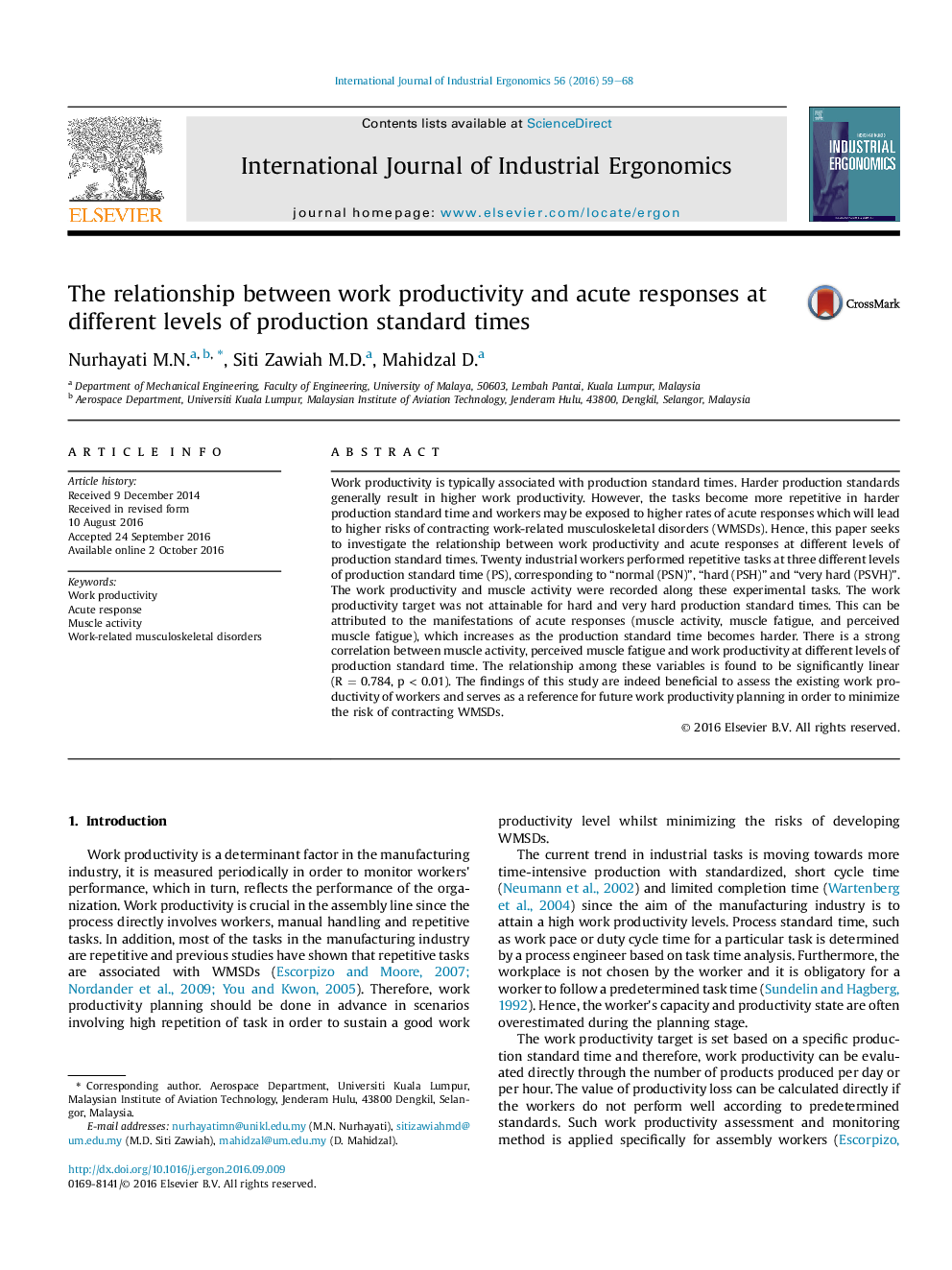| Article ID | Journal | Published Year | Pages | File Type |
|---|---|---|---|---|
| 5123738 | International Journal of Industrial Ergonomics | 2016 | 10 Pages |
â¢Manifestation of acute responses increases in harder production standard times.â¢Work productivity target was not attainable in harder production standard times.â¢Strong correlation between acute responses and work productivity.
Work productivity is typically associated with production standard times. Harder production standards generally result in higher work productivity. However, the tasks become more repetitive in harder production standard time and workers may be exposed to higher rates of acute responses which will lead to higher risks of contracting work-related musculoskeletal disorders (WMSDs). Hence, this paper seeks to investigate the relationship between work productivity and acute responses at different levels of production standard times. Twenty industrial workers performed repetitive tasks at three different levels of production standard time (PS), corresponding to “normal (PSN)”, “hard (PSH)” and “very hard (PSVH)”. The work productivity and muscle activity were recorded along these experimental tasks. The work productivity target was not attainable for hard and very hard production standard times. This can be attributed to the manifestations of acute responses (muscle activity, muscle fatigue, and perceived muscle fatigue), which increases as the production standard time becomes harder. There is a strong correlation between muscle activity, perceived muscle fatigue and work productivity at different levels of production standard time. The relationship among these variables is found to be significantly linear (R = 0.784, p < 0.01). The findings of this study are indeed beneficial to assess the existing work productivity of workers and serves as a reference for future work productivity planning in order to minimize the risk of contracting WMSDs.
